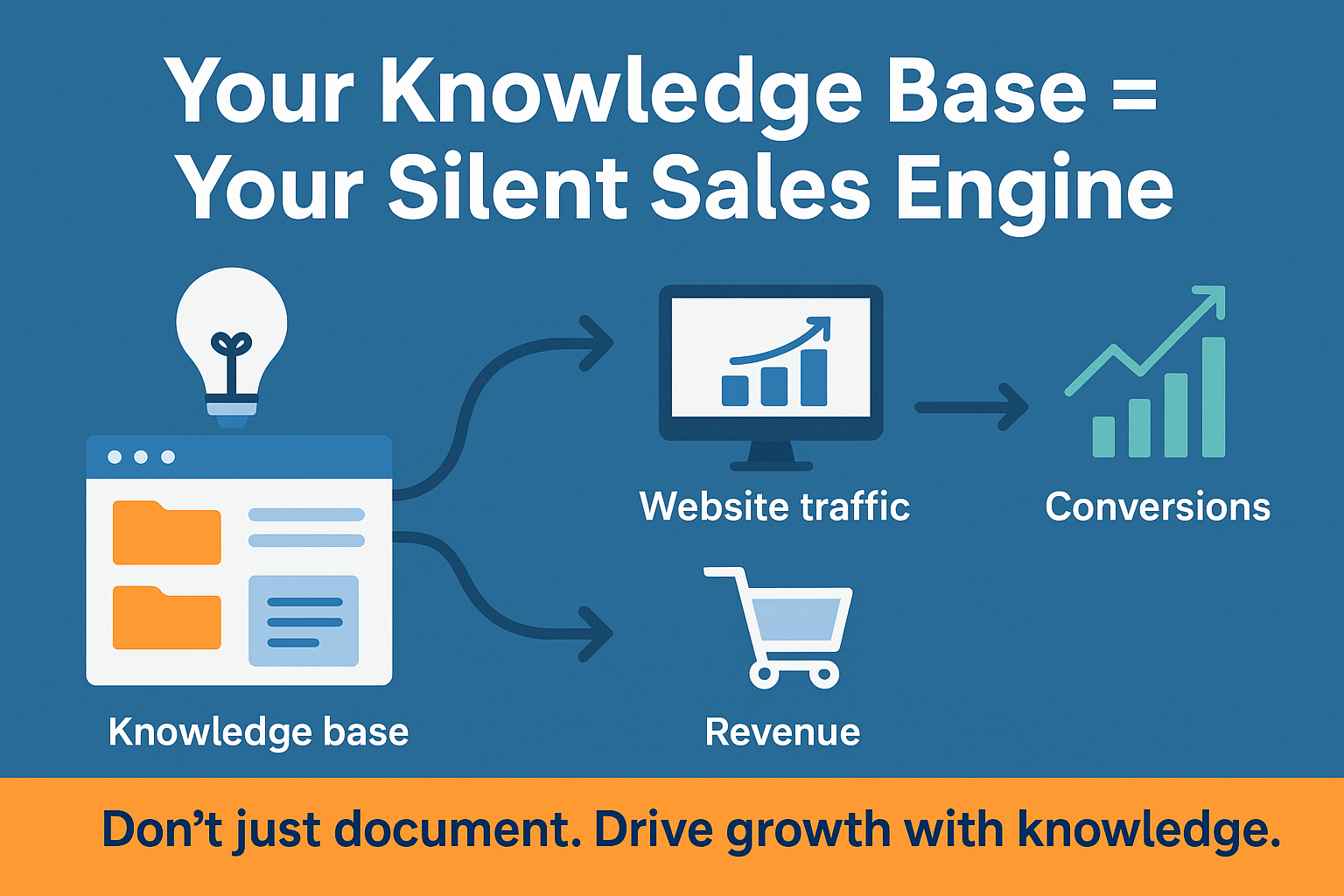A Knowledge Base to Drive Traffic & Boost Sales 🚀
In today’s digital era, every product company dreams of having a website that not only attracts visitors but also converts them into customers. Yet, most companies overlook one of the most powerful tools for achieving this — a knowledge base.
A well-structured knowledge base doesn’t just serve existing customers. It also acts as a magnet for new users, quietly driving organic traffic, improving brand credibility, and eventually increasing sales. Here’s how
1. Knowledge Bases Bring Consistent Organic Traffic
When a company publishes help articles, FAQs, setup guides, and troubleshooting content, it naturally builds a rich collection of SEO-friendly pages.
Each of these pages targets specific keywords — often the ones your potential customers are typing into Google while researching or comparing solutions.
For example:
-
“How to integrate CRM with email marketing”
-
“Best way to manage team access to SaaS apps”
-
“Troubleshooting mobile login errors”
These long-tail searches may not directly lead to purchases, but they introduce new users to your product ecosystem. Over time, this builds organic traffic that’s highly relevant and cost-effective — no paid ads needed.
2. It Establishes Authority and Trust
People buy from brands they trust.
When potential customers land on your knowledge base and see detailed, well-organized content, they perceive your company as credible, transparent, and customer-focused.
It’s like saying, “We know our product inside out, and we care enough to guide you every step of the way.”
This confidence often tips the scale in your favor when users are comparing multiple solutions.
3. It Reduces Friction in the Buying Journey
A knowledge base answers pre-sales questions too — not just support queries.
Imagine a potential buyer wondering:
-
“Can this software integrate with my existing tools?”
-
“Does this product support my platform?”
-
“What happens if I face an issue?”
If your knowledge base addresses these upfront, it removes hesitation and shortens the decision cycle.
The result: visitors convert faster, and your sales team spends less time answering repetitive questions.
4. It Supports Customer Success — Which Fuels Word of Mouth
Once customers find your product easy to understand and use, they become advocates.
A detailed knowledge base ensures smooth onboarding, quicker issue resolution, and reduced frustration — leading to higher satisfaction and retention.
And satisfied customers don’t just stay; they refer others, bringing in new traffic and sales organically.
5. It Powers Continuous SEO Growth
Your knowledge base isn’t static — it grows with your product.
Every update, new feature, or release brings new topics and keywords to target.
When search engines see regular content updates, they index your site more frequently. Over time, this builds a compounding SEO advantage that even your competitors will struggle to match.
In Short
A professional knowledge base is not just a support tool — it’s a growth engine.
It attracts visitors through SEO, builds credibility through transparency, nurtures buyers with helpful content, and retains customers by empowering them.
If your goal is to drive consistent traffic and increase sales, start treating your knowledge base as an integral part of your marketing strategy — not just a support resource.




